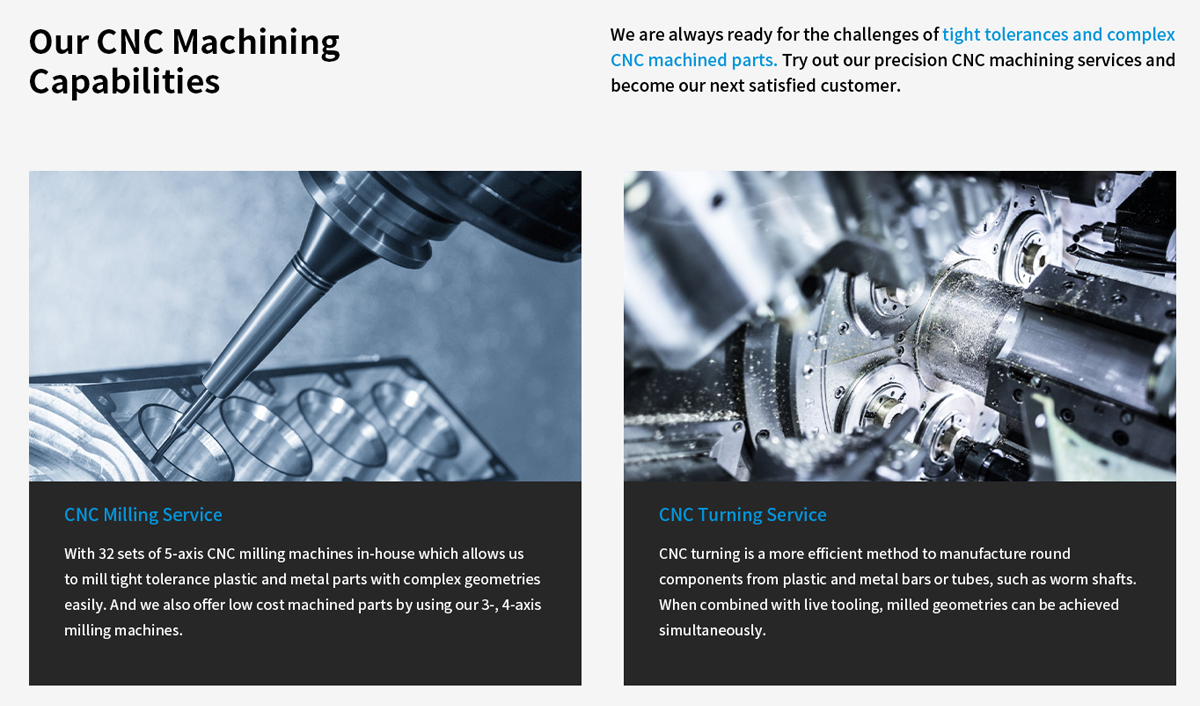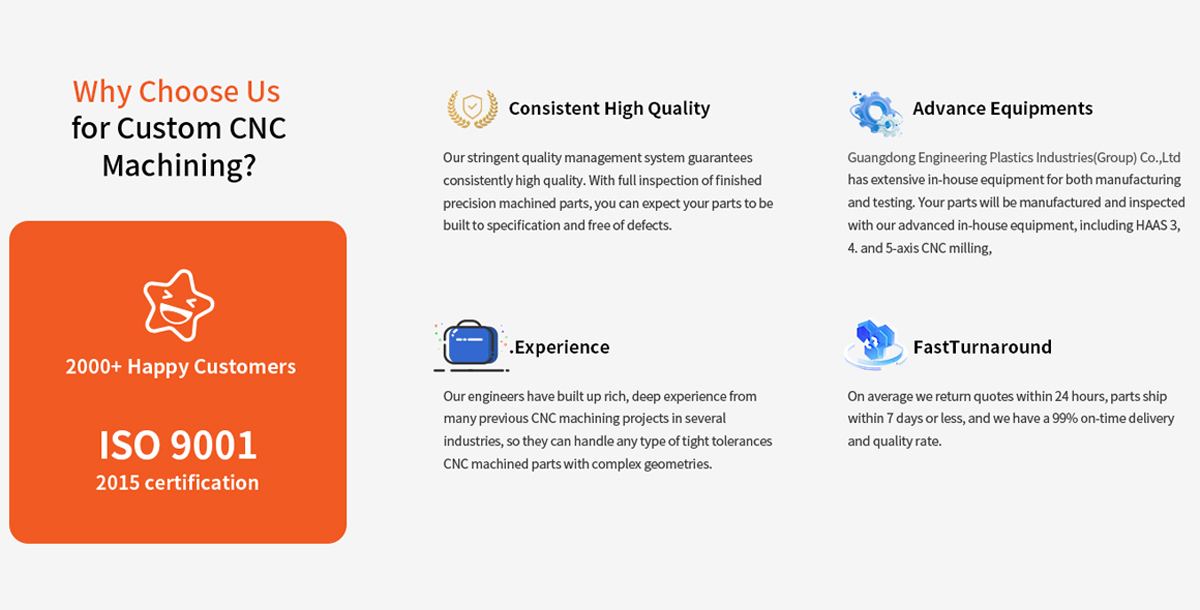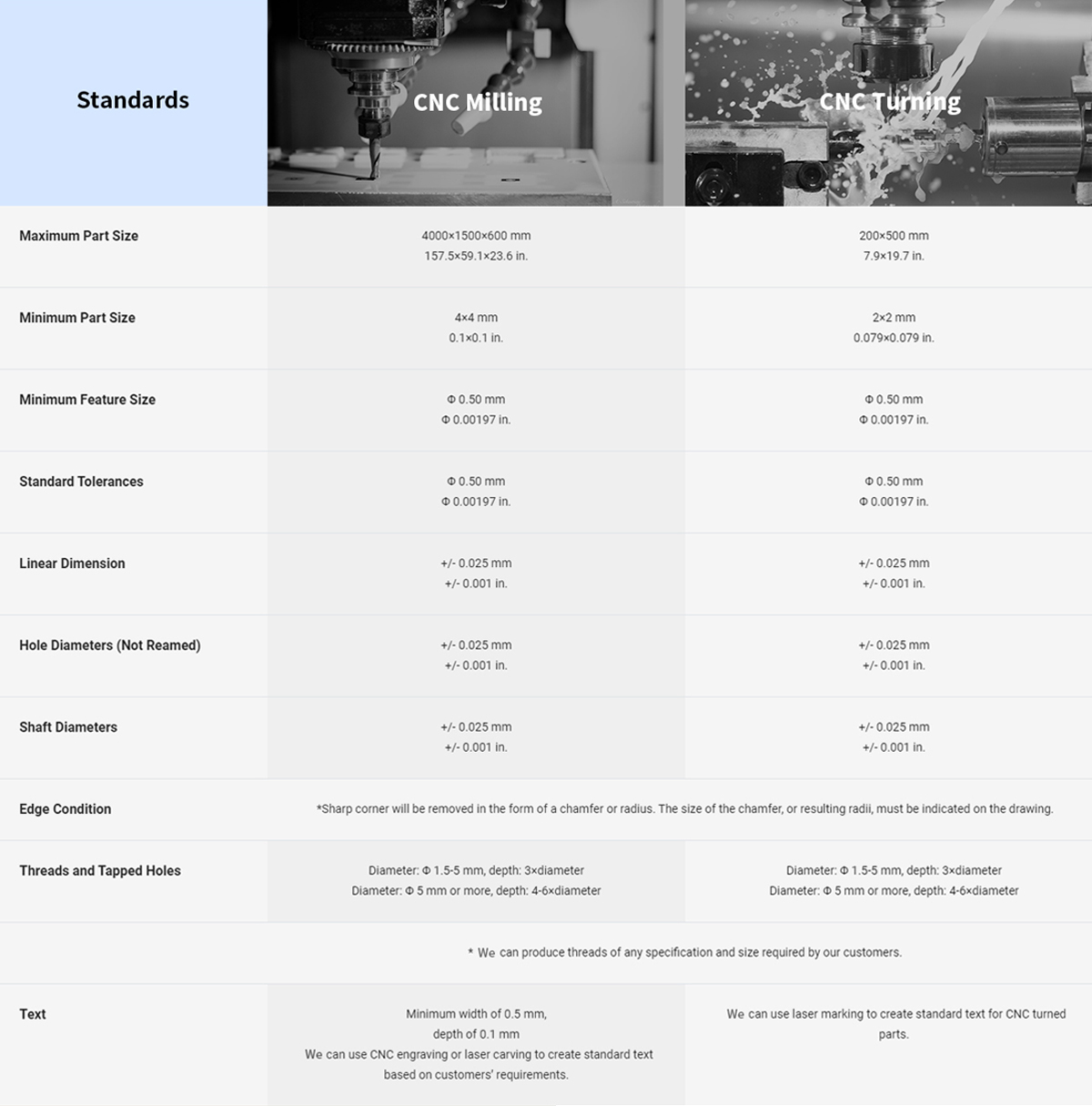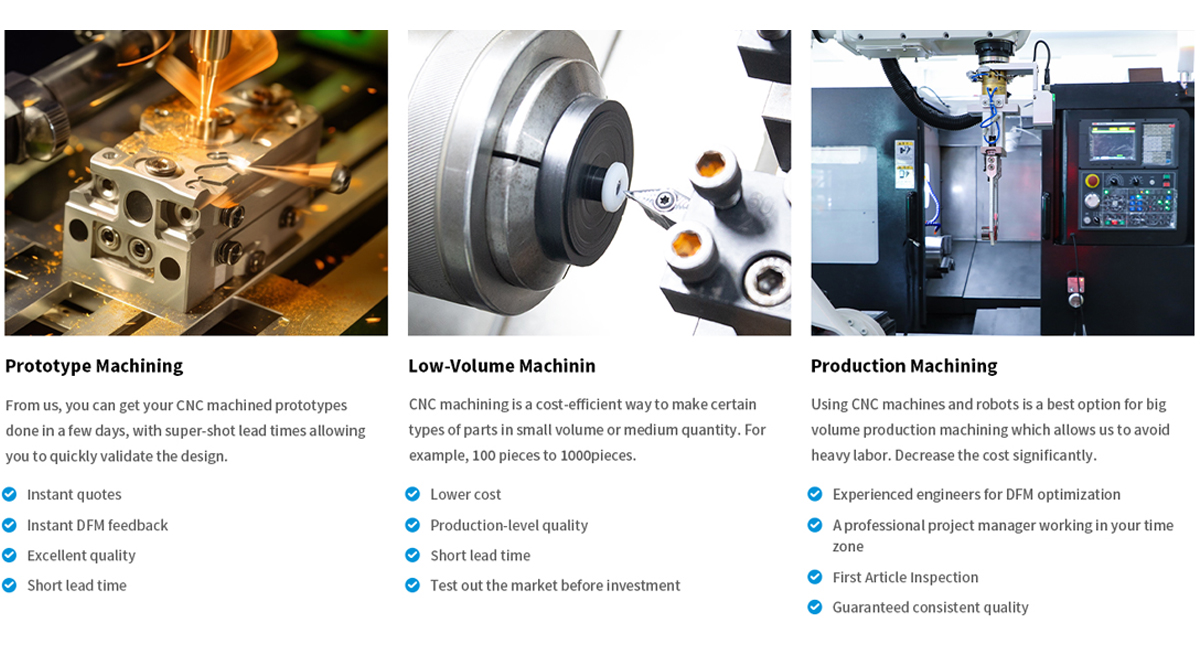
We are always ready for the challenges of tight tolerances and complex CNC machined parts. Try out our precision CNC machining services and become our next satisfied customer.
Your reliable partner for high-quality
Looking for a qualifed, quick-turn CNC machining supplier? We is definitely a great choice for custom metal and plastic machined parts. We own two CNC machining factories, which are set up for rapid prototyping and production part machining. With 60+ CNC machines in-house and a network of over 30 verified CNC machining shops located in China, Mexico, Germany and the US, our manufacturing capacity is unlimited, which ensures your high-quality machined parts can be shipped on time for every project. Try our online CNC machining services today!



CNC Machining Tolerances and Standards
With a wide range of CNC machines, we are able to provide standard tolerance CNC machined parts with the most economical price and super precision machined parts for high-end products. When working with Guangdong Engineering Plastics Industries (Group) Co, Ltd.we guarantee all parts will be made according to your specification. If 2D drawings are not available, you can also indicate with ISO 2678.

From rapid prototyping to production
CNC machining is an ideal manufacturing process whether you need a few parts or 10000+ units as end- used production parts. Here are the custom CNC services available at Guangdong Engineering Plastics Industries (Group) Co, Ltd.


What is CNC machining?
The CNC machining process is a subtractive manufacturing technique for removing material. CNC machining uses sharp cutting tools, available in a variety of shapes and sizes, which are precisely controlled by a computer. CNC stands for Computer Numerical Control.
How Does CNC Machining Work?
CNC machining starts with a computer, on which designers prepare a part using CAD (Computer-aided Design) software. This digital part is then converted into a format that can be recognized by a CNC machine. Instructions are sent to the CNC machine in the form of "G-Code" after which the machine can read and start cutting. Most CNC machines have a "worktable" and work holding device to keep a block of material - known as the "workpiece" - in place. The worktable may or may not move, depending on the style of the machine. When machining starts, the cutting tool makes contact with the workpiece, cutting away layers of material. The tool and/or workpiece is moved and/or rapidly rotated according to the G-Code instructions so that cuts are made in exactly the right places until the part is finished.
Instructions are sent to the CNC machine in the form of "G-Code" after which the machine can read and start cutting.Most CNC machines have a "worktable" and work holding device to keep a block of material一known as the "workpiece"一in place. The worktable may or may not move, depending on the style of the machine.
When machining starts, the cutting tool makes contact with the workpiece, cutting away layers of material. The tool and/or workpiece is moved and/or rapidly rotated according to the G-Code instructions so that cuts are made in exactly the right places until the part is finished.
Advantages of CNC machining
Here we present some of the main advantages of CNC machining compared to other manufacturing processes such as 3D printing, casting, laser cutting, plasma cutting, and injection molding.
Cost-efficient: The CNC machining process is a high-speed manufacturing process for certain types of parts. CNC machines with a powerful spindle and good machine tools allow us to remove raw material fast. If the part geometry is simple (for example, a solid base plate which needs holes, threads, steps, or grooves) very small amounts of raw material are removed. In this case, the unit price for CNC machining will be much lower than 3D printing, because it would take many hours to print such a part.
More precise: On a good CNC mill or lathe, the machine tolerance is +/-0.01 mm, and if we can remove 0.01 mm in the final cut from the workpiece, that means we can easily get parts machined with a +/-0.05 mm tolerance. Compare this to the 3D printing process, in which parts are printed layer by layer. The minimum layer height is 0.05 mm, which means the parts tolerance can't be less than 0.05 mm.
Better for surface finishing: Post-processing is always needed for cosmetic parts, so it is very important to achieve a good surface finish at the first stage. When the RPM of the CNC mill goes up to 15,000 and the CNC lathe up to 6,000, the CNC machined part surface roughness is less than Ra 0.8, which is good for bead blasted, painted, or anodized surfaces without sanding manually. Meanwhile for parts made from SLS, SLM, or DMLS processes, the surface roughness is far more than Ra 3.2.
More flexible part sizes: A large CNC machine center can have a table measuring 6 m x 30 m or larger, which means that very big parts can be milled. And as far as we know, the biggest lathe was built with a maximum 5 m diameter. At the other end of the scale, with precise 5-axis CNC machines and R0.05 mm cutting tools, we can mill a tiny geometry froma 1 cm X 1 cm X 1 cm block, while a Swiss machine can also be useful for making small parts for medical applications. 3D printing, urethane casting, die casting, and injection molding can't achieve these extreme minimum and maximum part sizes.
What are the different types of CNC machines we use?
At We CNC machine shop, we own 50+ CNC machines including mills, CNC turning machines (or lathes), CNC routers, and Electrical Discharge Machining (EDM) machines.
1.CNC mills have rotating cutting tools that are moved to different areas of the workpiece to make cuts and can be used to make many different parts. CNC lathes work the other way, rotating the workpiece against a stationary cutting tool, and are used to make cylindrical parts.
2.CNC routers are similar to CNC mills, but have less power and cannot cut the hardest materials. They can, however, be faster than CNC mills.
3.EDM uses electrical discharges (sparks) instead of a sharp cutting tool to cut material. No physical contact is made between the tool and the workpiece.
CNC machines are often defined by their number of axes. More axes mean they can move their tool and/or workpiece in a greater number of ways, giving greater cutting flexibility and the ability to make more complicated parts in a shorter time.